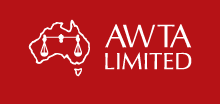
High Visibility Garments - Materials
FACT SHEET
TESTING OF HIGH-VISIBILITY SAFETY GARMENTS PART II
Background This is the second article in a series relating to information about high-visibility garments. The first of these articles looked at the design aspects, this article focuses on the materials used in these garments. The Standard for High-Visibility Safety Garments AS/NZS 1906.4:2010 is the joint Australian and New Zealand standard covering the materials used in high visibility safety garments. This standard is also referred to in AS/NZS 4602.1:2011 which relates to product design. Application of the Standard There are two specifications relating to materials: the background material used in Day and Day/Night garments the retroreflective tape used in the Day/Night and Night garments The background materials can be fluorescent ("F") or Non-Fluorescent ("NF"). Fluorescent materials are most efficient in day light when there is an appreciable amount on UV (ultraviolet) in the light. Artificial night time lighting contains little or no UV, so these background colours have limited visibility in night lighting. The retroreflective tapes are only effective at night time. Tests and Specifications Background Material Specifications for the colour space and luminance (brightness) are provided in the AS/NZS 1906.4:2010. The colour space is divided into 2 main classes - yellow and orange-red, with further divisions for certain applications. The colour space is illustrated on a graph, using x and y co-ordinates, an example of which is shown on the right. The most common and most effective colours are fabrics dyed or printed with fluorescent dyes or pigments (class F). However there is provision in the standard for the use of non fluorescent colour (class NF) which is applicable for natural fibres. The specification of luminance is lowered accordingly and users need to be aware that such garments may not have the same long distance visibility as fluorescent materials. Measurements are conducted under a standard light source (D65) with the material in a dry state for all garments. Fabrics intended for wet weather use are also tested wet. Wet luminance allowance is 85% of the dry luminance, reflecting the dulling associated with water. Additional tests are also mandatory within AS/NZS 1906.4:2010, with minimum specifications for colour and luminance after light exposure and colour fastness to washing and perspiration measurements of the durability of the colour in the material (not of the material itself).
FACT SHEET
Retroreflective Tape Retroreflective tape is the material that gives night time visibility. These tapes reflect any light shining onto them back to the light source. They are most effective in night time driving when the driver is approximately at the same angle of viewing as the light source. Retroreflective tape comes in two varieties - Class R or Class RF. Class R tape are those where the colour is not relevant (this is most often silver, and used in many applications). Examples of Class R tapes are shown on the right in three different garments.
Class RF tapes are a combined-performance tape these are retroreflective and include fluorescent colours in the tape itself (not just the background material). The widest application of RF tapes is in the fire service industry, an example of which is shown on the left. The tapes are tested for minimum brightness and are measured at various angles to ensure their effectiveness. Other factors relating to their durability are specified as part of the standard. These tests include brightness after light exposure, washing, abrasion, raised temperature and rainfall, along with a check on flexing and cold cracking.
Advice on High-Visibility Safety Garment Testing The variety of tests conducted within AS/NZS 1906.4:2010, together with the design standard for such garments (AS/NZS 4602.1:2011 discussed in a previous Fact Sheet), ensures a complete performance analysis of highvisibility garments. NZWTA Ltd has a comprehensive understanding of the standards involved in high-visibility garment testing and can provide a report on the conformance to these standards. If you are involved with manufacturing, importing or using high-visibility garments and want to ensure the garments are compliant with current standards, contact NZWTA on: +64 6 835 1086 OR Email: Lorraine.greer@nzwta.co.nz / Christian.judan@nzwta.co.nz
| File Name: | High Visibility Safety Garments - Materials.pdf |
| File Size: | 430.97 KB |
| File Type: | application/pdf |
| Hits: | 4764 Hits |
| Created Date: | 04-08-17 |
| Last Updated Date: | 30-04-24 |
